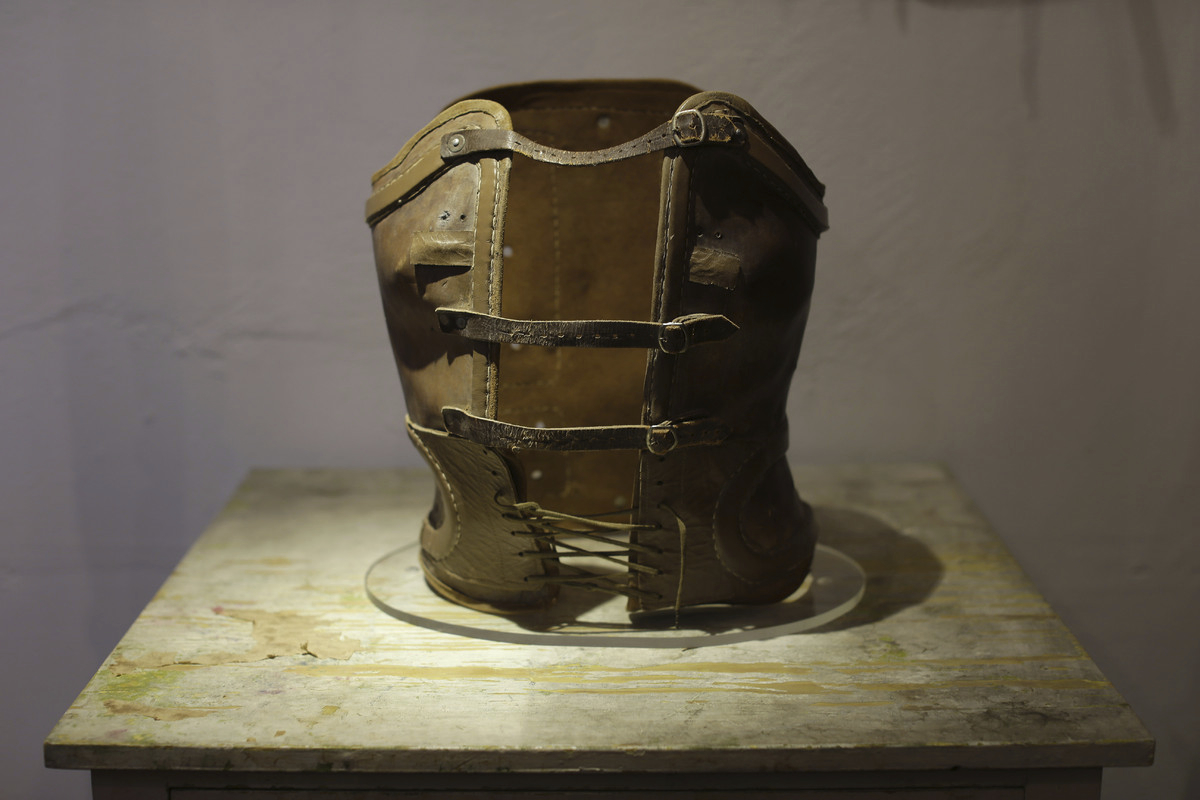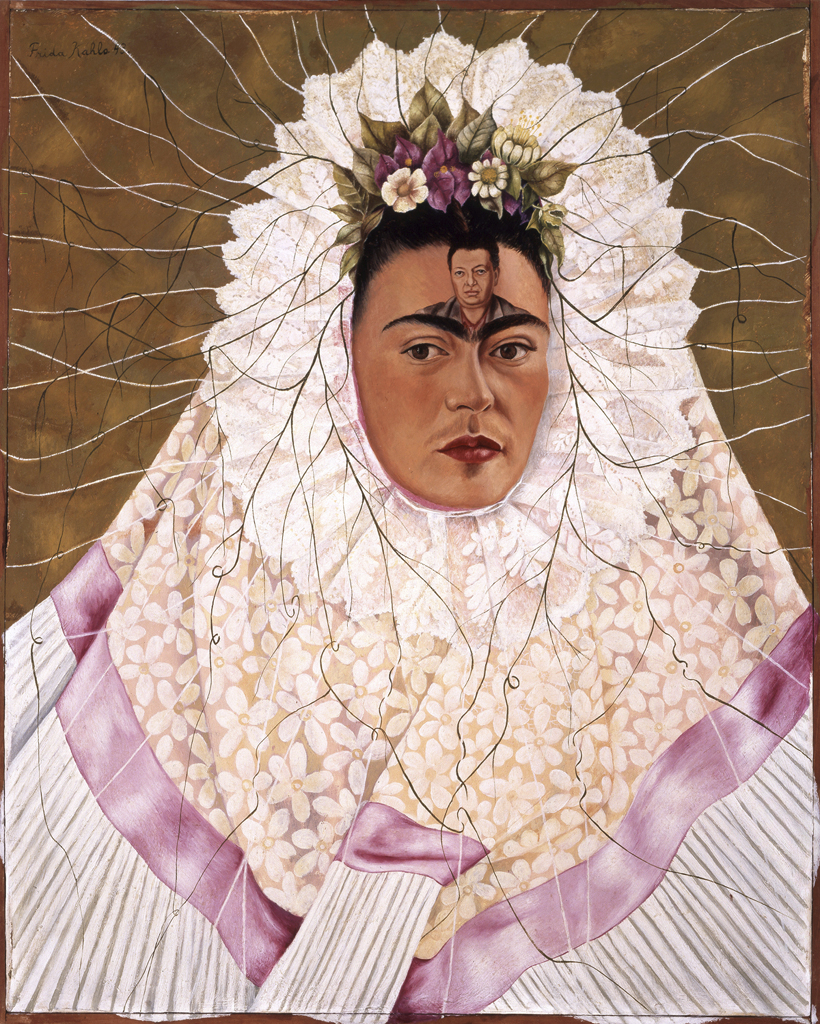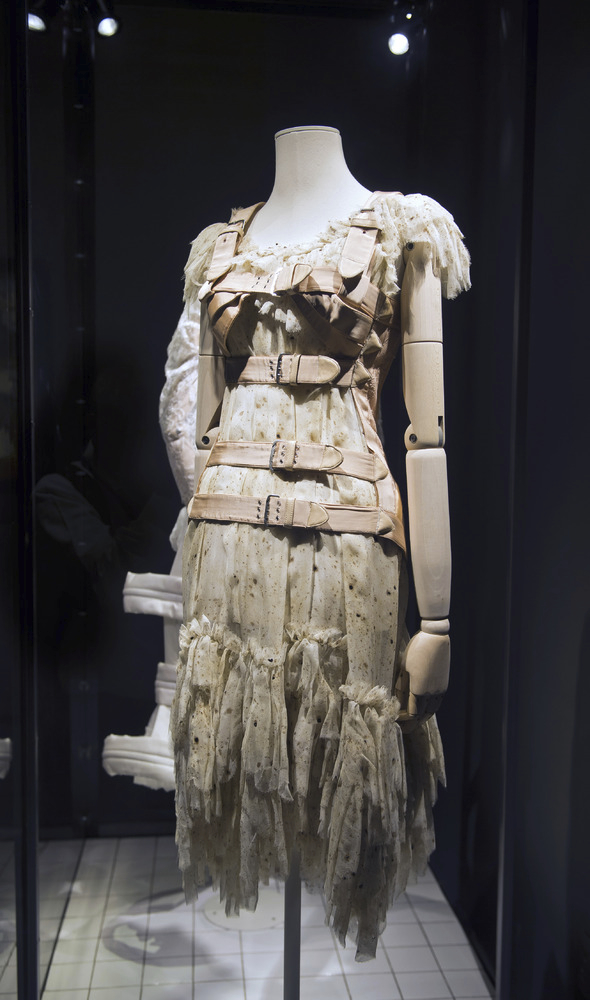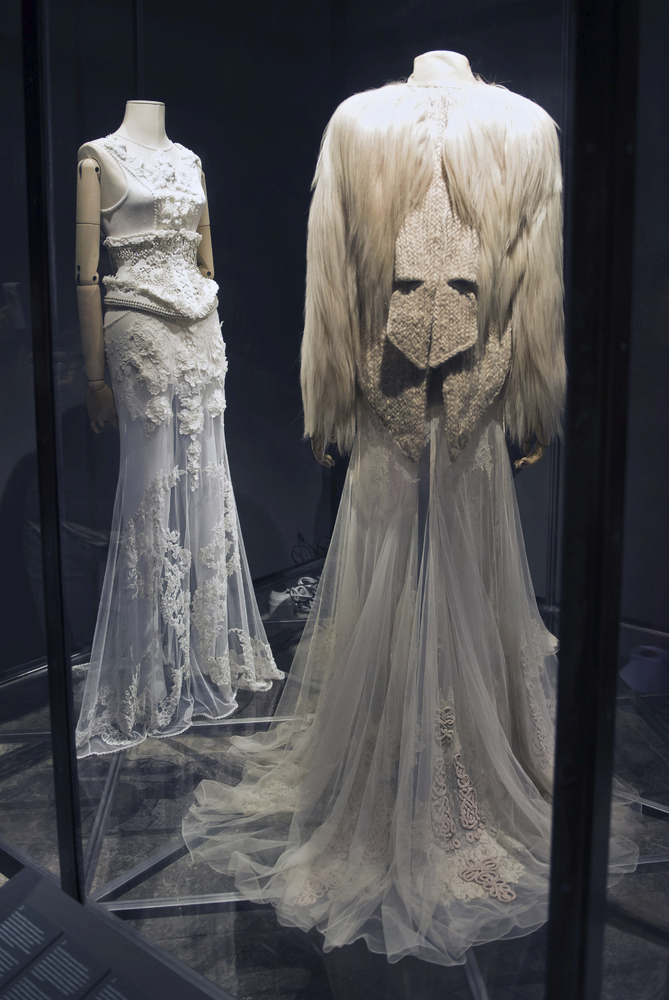The women on the cocktail circuit of the late 1930s were all curve-hugging dresses and gelled curls. Not Mexican surrealist painter Frida Kahlo. She graced dinner parties and theaters from Paris to New York in ribbons, full skirts and loose peasant blouses embroidered with vividly colored flowers, and her uni-brow was a bold contrast to the pencil-line eyebrows of the time.
Over the years, Kahlo’s look has become as influential as her art, capturing the fancy of trendsetters from Madonna to singer Gwen Stefani and French designer Jean Paul Gaultier. There are YouTube tutorials on how to braid hair like she wore hers, and Vogue Italy lets readers know where to shop for Kahloesque skirts and jewelry.
“She has made stylistically a lasting impression on fashion and style in general because it had both: use of color and she was definitely an icon of the feminist movement,” said Misha Nonoo, a British designer who last month showcased her Spring 2013 collection with the concept of a fictional Kahlo visit to Havana.
Now, a full collection from her wardrobe is going on display in Mexico City after being locked away for nearly 50 years in her armoires and dressers: jewelry, shoes and clothes that still carry the scent of the late artist’s perfume and cigarette smoke or stains from painting.
“She had a tremendous self-confidence. She was convinced that what she wore displayed who she was inside,” said Alejandra Lopez, art restorer for the painter’s home, now the Frida Kahlo Museum, where the collection will be shown starting Nov. 22 in an exhibit sponsored by Vogue Mexico.
Yet Kahlo’s clothing was also an armor of sorts. It was her ally in disguising a life of pain, both physical and emotional. She had polio as a child, a bus accident maimed her at age 18, there were miscarriages, and she endured the countless affairs of her husband, renowned muralist Diego Rivera.
Her long, full skirts hid a tiny, thin right leg, and loose blouses covered the stiff corsets she wore for back pain.
“She described how she used her clothes to cover her body imperfections,” the exhibit’s curator, Circe Henestrosa, said during a sneak peek offered to The Associated Press.
After Kahlo died in 1954, her husband ordered her clothes to be locked up for 15 years. He died three years later, leaving art collector Dolores Olmedo as the manager of his and Kahlo’s houses and she refused to give access to Kahlo’s archives of letters, clothes, jewelry and photographs. They were not unlocked until 2004, after Olmedo died.
“The story of Frida started to change with the discovery of her things,” Trujillo said.
Her life of suffering was the subject of her paintings, and it inspired books, plays and the 2002 movie “Frida” starring Mexican actress Salma Hayek. Kahlo-mania outside Mexico started in the 1980s with the publication of her biography by Hayden Herrera that was widely read outside art circles.
Fashion designers and photographers have since been captivated by Kahlo and have put together collections, such as Gaultier’s 1998 homage. As recently as last month for Madrid Fashion Week, the spring 2013 designs of Maya Hansen featured corseted dresses, flowers and skeleton patterns.
The show, “Appearances Can Be Deceiving: The Dresses of Frida Kahlo,” will include a black velvet short cape with lace border, a twist on the popular capelet of the time; a worn silk blouse with square neckline of embroidered red, yellow and lavender flowers; and a purple cotton blouse with patterns of red and yellow squares. Also on display will be a long purple skirt with white flowers that look like poppies, a yellow long-sleeved ruffle shirt with a pattern of fall leaves and a muslin skirt of sangria color.
Poignantly, the exhibit will show the white corset that Kahlo featured in her self-portrait “The Broken Column.” And there will be an earring that was a gift from Pablo Picasso and was featured in another 1940 painting of herself. Its mate has not been found.
Restorers and the exhibit’s curator say many of Kahlo’s blouses were custom made. She bought the fabrics and took them to Indian seamstresses. Some were made of velvet cherry, the fabric often used for traditional elegant dresses in Oaxaca region known as the Isthmus of Tehuantepec.
Henestrosa, the curator, said the Tehuana dress, named after Indian women of that region, was Kahlo’s signature piece of clothing. She wore it with large gold earrings and flowers in her braided hair.
“It is not a dress she chose by accident. The women run that society. The women symbolize power,” Henestrosa said.
The dress became her signature look in her many self-portraits – copied by women worldwide.
“This is going to amplify her influence much more,” said Trujillo, the museum director.
Joelle’s Tips:
La Casa Azul – Museo Frida Kahlo :.
Photo Captions: ( Huffington Post)
Museum keeper Ximena Gomez places a traditional garment worn by indigenous women known as a “huipil,” that belonged to late Mexican artist Frida Kahlo, before putting it on exhibit at the Frida Kahlo museum in Mexico City, Tuesday, Oct. 2, 2012. A full collection from Kahlo’s wardrobe will go on public display Nov. 22 in Mexico City after being locked for nearly 50 years in her armoires and dressers: jewelry, shoes and clothes that still carry the scent of the late artist’s perfume and cigarette smoke or stains from painting. (AP Photo/Dario Lopez-Mills)
The detail of the embroidery on a traditional garment worn by indigenous women known as a “huipil” that belonged to late Mexican artist Frida Kahlo is displayed in an office before going on exhibit at the Frida Kahlo museum in Mexico City, Tuesday, Oct. 2, 2012. A full collection from Kahlo’s wardrobe will go on public display Nov. 22 in Mexico City after being locked for nearly 50 years in her armoires and dressers: jewelry, shoes and clothes that still carry the scent of the late artist’s perfume and cigarette smoke or stains from painting. (AP Photo/Dario Lopez-Mills)
In this April 14, 1939 file photo, painter and surrealist Frida Kahlo, who was the wife of noted Mexican muralist Diego Rivera, poses at her home in Mexico City. A full collection from Kahlo’s wardrobe will go on public display Nov. 22 in Mexico City after being locked for nearly 50 years in her armoires and dressers: jewelry, shoes and clothes that still carry the scent of the late artist’s perfume and cigarette smoke or stains from painting. (AP Photo/File)
A leather corset that belonged to late Mexican artist Frida Kahlo is displayed at the Frida Kahlo museum in Mexico City, Tuesday, Oct. 2, 2012. A full collection from Kahlo’s wardrobe will go on public display Nov. 22 in Mexico City after being locked for nearly 50 years in her armoires and dressers: jewelry, shoes and clothes that still carry the scent of the late artist’s perfume and cigarette smoke or stains from painting. Her loose blouses covered the stiff corsets she wore for back pain. (AP Photo/Dario Lopez-Mills)
Museum keeper Alejandra Lopez works with a mannequin wearing an indigenous shirt known as a “huipil” and a skirt that belonged to late Mexican artist Frida Kahlo before putting it on exhibit at the Frida Kahlo museum in Mexico City, Tuesday, Oct. 2, 2012. A full collection from Kahlo’s wardrobe will go on public display Nov. 22 in Mexico City after being locked for nearly 50 years in her armoires and dressers: jewelry, shoes and clothes that still carry the scent of the late artist’s perfume and cigarette smoke or stains from painting. (AP Photo/Dario Lopez-Mills)
































